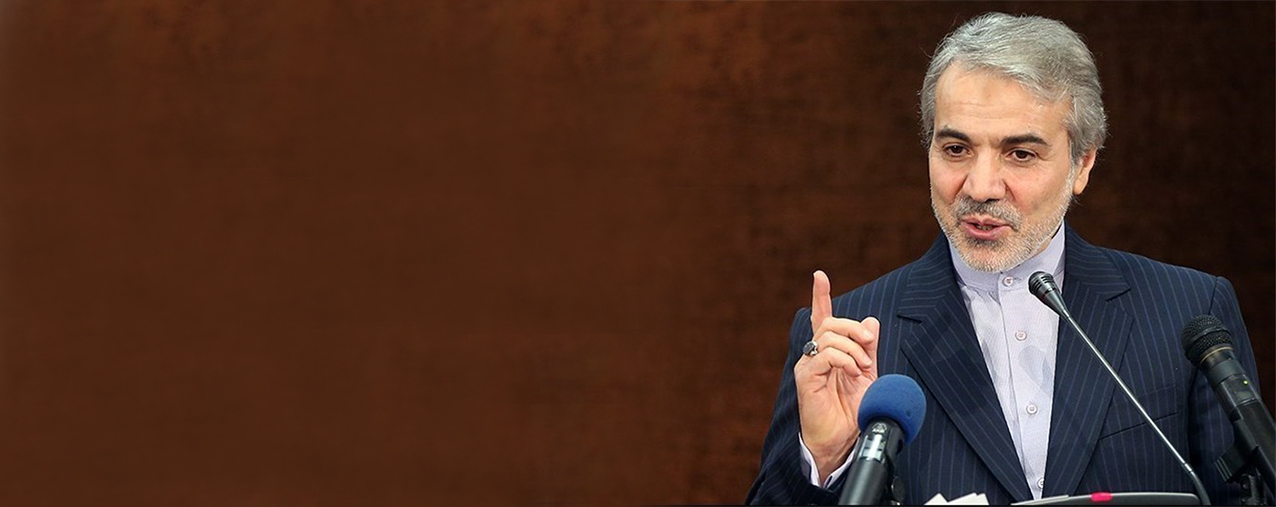Government Spokesman Mohammad Baqer Nobakht said the expansion of Iran’s budget during the administration of President Hassan Rouhani has not kept pace with inflation.
Nobakht, who also chairs Iran’s Planning and Budget Organization, told reporters on Monday that “general revenues” stood at 2.1 quadrillion rials ($55.1 billion) in the fiscal year to March 2014.
"The figure reached 2.9 quadrillion rials ($77.3 billion) in the current budget (March 2016-17)," he said.
“The budget has increased 40% in four years. Assuming an average inflation rate of 10% during the period, we cannot consider the budget expansionary."
Nobakht reviewed the changes in earnings and expenditures in the past four years. He said bonds had the highest rise in terms of generating revenues for the government.
Bond earning has reached 386 trillion rials ($10.1 billion) this year, up 2.5 times compared to the fiscal 2013-14.
Customs revenues and tax earnings, both measured in one category, reached 1.3 quadrillion rials ($34.1 billion) in the current Iranian year, which shows an 81% hike compared to the fiscal March 2013-14.
This year’s crude earnings rose 13% compared to the fiscal 2013-14 to stand at 694 trillion rials ($18.2 billion).
As for the expenditures, the government has to spend more to settle its bond issues. Spending associated with bonds averaged 100 trillion rials ($2.6 billion) this year, registering an 82% rise over the past four years.
Government investment in infrastructure development has increased 67% during the four-year period to hover around 370 trillion rials ($9.7 billion) this year.
“General spending", including those associated with social welfare, education, defense, security and health, has increased by 59% during the period under review.
> Myriads of Challenges
Nobakht referred to the big size of the government as the biggest challenge facing the administration.
The government holds the majority stake in Iran’s economy, bringing about low productivity and high costs. More than two-thirds of the revenues projected for next year will be spent to cover the expenses of ministries and their affiliated companies and organizations.
As for other inevitable costs, Nobakht referred to the huge amounts of cash that the government is obliged to pay the public as part of the cash subsidy scheme. He also referred to resources earmarked to purchase agricultural products such as wheat and rice from domestic farmers.
The administration is unable to reduce most of those costs, as they fall into the budget’s fixed expenditures, as opposed to the flexible funding for development projects.
Figures published by the Central Bank of Iran show the budget earmarked for the development sector has never been fully allocated in the past few years.
The government was supposed to earmark $10 billion to development projects in the eight months of the current Iranian year (March 20-Nov. 20), whereas only 39% of this amount were injected.
This, in fact, has been the case during the past three years, as the government only met 58%, 68% and 39% of its development spending target during March 2015-16, March 2014-15 and March 2013-14 respectively.
The Iranian Parliament on Sunday passed Iran’s general budget for the upcoming new year (March 2017-18). Lawmakers put the figure at 3.98 quadrillion rials ($104.6 billion).
The general budget includes revenues of ministries and state institutions, which amount to 516.3 trillion rials ($13.5 billion). In the budget law of the current Iranian year (March 2016-17), the figure stood at 3.35 quadrillion rials ($88 billion), which is about 19% less compared to the new budget’s figure.
Nobakht also refers to the multitude of unfinished projects as another major issue the government is grappling with.
According to Gholamreza Shafei, deputy for technical affairs and infrastructure development at Planning and Budget Organization, the government needs 4 quadrillion rials ($105 billion) to complete 70,000 unfinished projects across the country.
“It would take at least 10 years to complete all these projects,” Shafei said.
Almost half of the next year’s development budget ($7.5 billion) will be used to complete 2,700 incomplete projects.
These unfinished projects have led to the accumulation of huge debts on the part of the government to contractors. The total value of overdue payments to contractors by ministries, including the Ministry of Energy, has been unofficially estimated at $35 billion.
According to Nobakht, the only way out of this problem is to pave the way for the private sector to invest in infrastructure projects.


